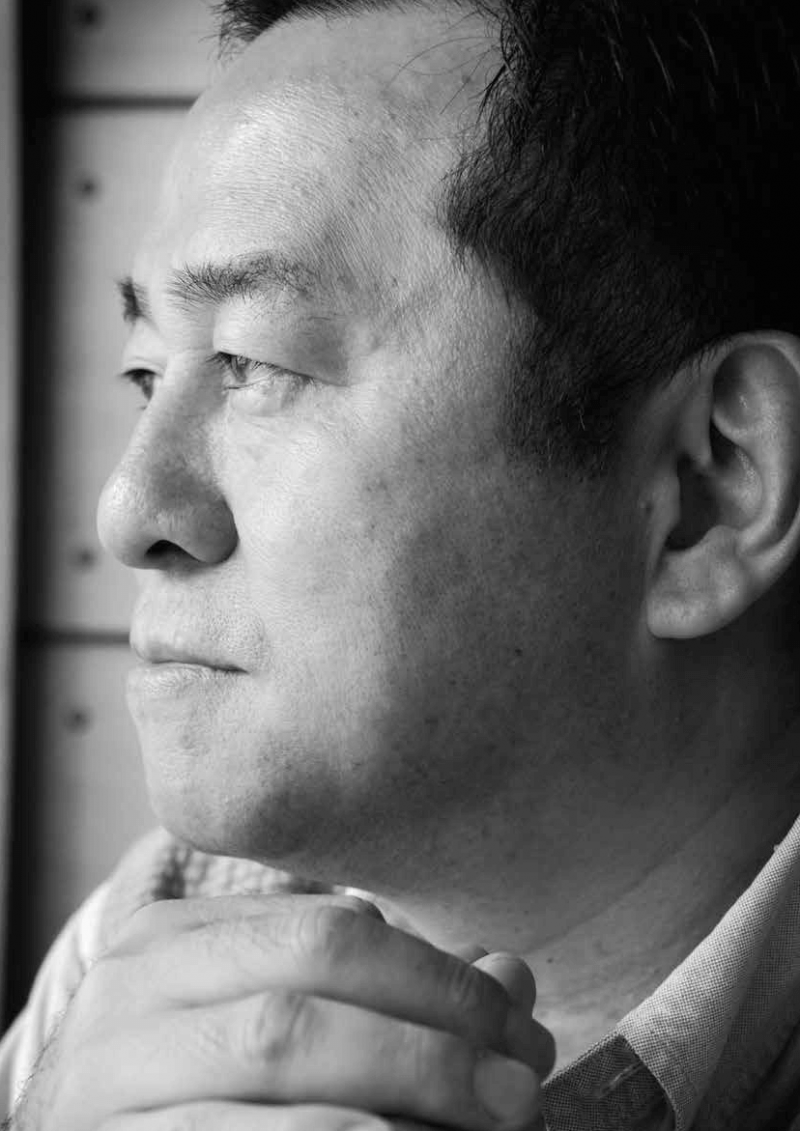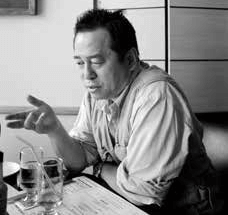Issue:

Like most of us, Teddy Jimbo can remember the proverbial fork in the road that offered an alternative path to his life. Teddy’s came at age 15, when he was sent to a competitive boarding school for elite-track children.
At the end of the road he’d been following lay a possible place in the University of Tokyo and a career in business or government. In between loomed three years of misery, he recalls. “I really didn’t like it there basically we were forced to give up all the fun a teenager can have.”
So in 1977 Teddy left Tokyo, where he had grown up, to join his free ,spirited mother in New York. She had put him in the care of his grandmother in 1974 to study and teach music at Teacher’s College, Columbia University. “All my relatives were opposed to the trip because they thought it was better to stay in Japan rather than follow some strange woman to America.”
Teddy spent a demanding three years at a New York high school. “I could hardly speak any English but my vocabulary was very good,” he says. He won a place at Columbia University but after finishing his freshman year he began travelling around the world. He landed back in Japan, broke, in the early 1980s.
By the time he graduated from Tokyo’s International Christian University in 1985, he knew he wanted to be a journalist. The conversion came slowly: He had produced a high school graduation video in 1980 using a Sony Betamax camera and been bitten by the reporting bug. At ICU, he had written a thesis about poverty and development in the Third World and concluded he wanted to cover those issues.
“I knew I didn’t like office work,” he says. “I wanted to do something that would allow me to be at the scene of the action. And I enjoyed writing and producing videos.” The late FCCJ stalwart Sam Jameson advised him to work a year before going to journalism graduate school, so he began writing for Pacific Stars and Stripes in Tokyo.
There followed a postgraduate degree from Columbia University and stints with the Christian Science Monitor in Boston and AP in New York. In 1988, a shorthanded AP office in Tokyo pulled him back to the city. It was, he recalls, like “jumping into a war zone:” 1988-1990 were the years of the Recruit scandal, the democracy movement in South Korea and the death of Emperor Hirohito. “The news situation was so hectic,” he says.
In the 1990s, he turned freelance writing for both the Japanese and English media then gradually drifted toward the new medium of video. “I was fearless, I guess,” says Teddy, smiling. “I became a journalist because I wanted to do stories on poverty and the environment, and it’s tough to do that within a big organization like AP. “
‘I’D RATHER STICK TO QUALITY JOURNALISM, BECAUSE I SEE A DANGER IN JOURNALISTS ONLY GOING AFTER POPULAR OR SENSATIONAL STORIES.’
Covering landmines and global environmental issues didn’t pay well, he laments, but he got to work as a freelancer across much of Africa and Asia, and he learned how to use portable video technology, particularly the then revolutionary Sony BX1000. The equipment allowed him to meet minimum level broadcast standards and he began selling footage from Africa to Japanese and U.S. television companies.
Teddy calls what he has done since, “video journalism” reportage shot not by cameramen or videographers but by reporters with a feel for a story and editing. “We deliberately show the process of journalism so the journalistic quality is very different from conventional television.”

In 1999, Teddy took another leap in the dark when he set up Videonews.com, an independent, subscriber only video news producer. Today, his company employs 10 people and has 15,000 subscribers paying ¥500 a month. Its two hour weekly special is probably the longest running internet program in the world. Three years ago Videonews.com passed the business break even point.
In early April 2011, Teddy took his cameras into the contaminated no go zone around the Fukushima Daiichi nuclear plant, stealing a scoop from Japan’s big TV networks, which had collectively agreed to stay away. In a remarkable spirit of public service, he put the compelling footage online for free, where it scored around 2.5 million hits. “The world was watching so I thought making it public was much more important than trying to sell it,” he explains.
“I do what I do as a journalist because I see a story that I need to cover, and I don’t really worry about how many hits or readers it gets,” he continues. “It’s nice to be printed and seen in the Yomiuri, but I’d rather stick to quality journalism because I see a danger in journalists only going after popular or sensational stories.”
Teddy has penned a dozen books and continues to write articles, produce out put for his company and occasionally for the big TV networks. His next book will explore what he calls the current “scary and critical” transitional moment in contemporary media. Many journalists have yet to realize, he says, that the internet has opened up the delivery path to the public with potentially revolutionary results.
“Conventional journalism is losing its function but new media has yet to fill the gap.”
The “still heavily protected” Japanese media is particularly unprepared for this transition, he adds. “Their privileges won’t last forever.”
David McNeill writes for The Independent, The Economist, The Chronicle of Higher Education and other publications.

